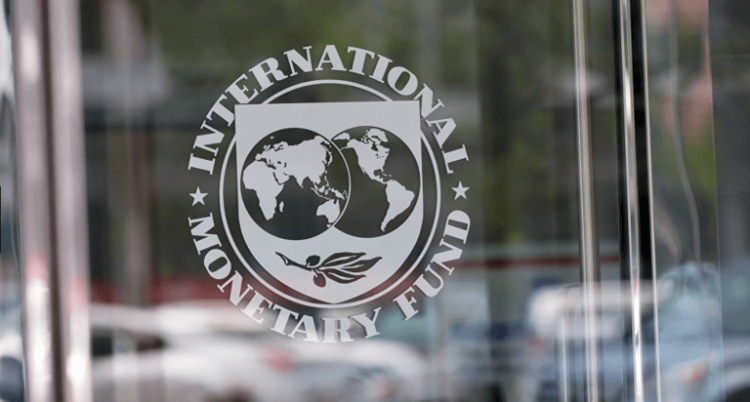IMF Raises Global Growth Outlook for 2025 to 3.2%, Says Trump’s Tariffs Have Softer Economic Impact Than Feared


The International Monetary Fund has raised its forecast for global economic growth in 2025, citing a surprisingly mild hit from U.S. President Donald Trump’s trade tariffs and stronger-than-expected resilience in private sector activity.
But the Fund cautioned that risks from escalating trade tensions, elevated inflation, and slowing momentum in China remain serious threats to long-term global stability.
In its latest World Economic Outlook (WEO) report released Tuesday, the IMF revised its 2025 global growth projection upward to 3.2 percent, from 3.0 percent in July, while keeping its 2026 forecast unchanged at 3.1 percent.
Register for Tekedia Mini-MBA edition 18 (Sep 15 – Dec 6, 2025): registration continues.
Tekedia AI in Business Masterclass opens registrations.
Join Tekedia Capital Syndicate and co-invest in great global startups.
Register for Tekedia AI Lab: From Technical Design to Deployment.
IMF Chief Economist Pierre-Olivier Gourinchas said the revision reflects “a smaller-than-expected tariff shock,” noting that the private sector in many countries has adjusted quickly to the new trade environment created by Trump’s policies.
“The tariff shock itself is smaller than initially feared,” Gourinchas told reporters in Washington. “The private sector has responded in an agile way, and that adaptability has helped cushion what could have been a sharper slowdown.”
Tariff Impact Milder Than Feared
Since his return to the White House, Trump has reimposed sweeping tariffs on key U.S. trading partners, including China and the European Union, framing the measures as an effort to protect American jobs and manufacturing. Over the weekend, he threatened to double down with 100 percent tariffs on China, following Beijing’s move to tighten export controls on rare earth minerals — crucial inputs for defense and high-tech industries.

While economists initially warned that such aggressive trade policies could severely disrupt global supply chains, the IMF said their impact so far has been tempered by adaptive responses from businesses and governments.
Other factors, including the AI boom and expansionary fiscal policies in Europe and China, were noted to have helped to prop up the global economy.
However, the IMF warned that the broader effects of a trade war “are here” and could dim already weak global growth prospects if tensions escalate further.

The Fund noted that the latest projections were compiled before the most recent tariff threats between Washington and Beijing, meaning future updates could show greater risks if the dispute deepens.
Global inflation, while easing from the multi-decade highs of 2023, remains stubbornly above target in many economies. The IMF expects worldwide consumer prices to rise 4.2 percent this year and 3.7 percent in 2026, with elevated inflation in the United States, the Eurozone, and parts of Latin America keeping pressure on central banks to maintain restrictive policies.
The report said that while inflation has fallen sharply from its post-pandemic peak, the decline has been uneven, especially in advanced economies with tight labor markets.
U.S. Growth Outlook Upgraded
The IMF upgraded its forecast for the United States — the world’s largest economy — by 0.1 percentage point for both 2025 and 2026. U.S. GDP is now projected to grow 2.0 percent in 2025 and 2.1 percent in 2026, slower than the 2.8 percent expansion recorded in 2024 but still stronger than most other advanced economies.
The IMF attributed the resilience of U.S. growth to strong consumer spending, robust labor markets, and fiscal stimulus programs that have offset some of the drag from trade restrictions.
Still, the Fund warned that prolonged tariff conflicts could eventually weigh on investment and productivity.
Trade tensions, by their nature, raise uncertainty and discourage cross-border investment. That remains a risk to the medium-term outlook.
China Faces a Slowing Economy
Despite ongoing trade tensions, the IMF left its forecast for China unchanged, projecting growth of 4.8 percent in 2025 — down from 5.0 percent in 2024 — and a sharper slowdown to 4.2 percent in 2026.
Beijing’s economy, once the engine of global expansion, continues to lose steam amid weak exports, a faltering property market, and declining foreign investment. The Fund said China’s slowdown has been partially offset by stronger domestic demand supported by targeted policy stimulus, including infrastructure spending and consumption incentives.
Still, China faces “structural headwinds,” including high local government debt and demographic challenges, which the Fund said remain serious constraints on future growth.
India, Japan, and Asia Show Momentum
Elsewhere in Asia, the IMF raised India’s 2025 growth forecast to 6.6 percent, up from 6.4 percent in July, citing sustained domestic demand and expanding industrial output. Japan also saw an upgrade to 1.1 percent, a notable 0.4 percentage point increase, as its export sector benefited from the weaker yen and resilient global demand for high-tech components.
Europe’s Recovery Still Fragile
In Europe, economic recovery remains uneven. The IMF said the Eurozone would grow 1.2 percent in 2025 and 1.1 percent in 2026, both slight upgrades from July. Yet, the bloc continues to lag behind the United States, weighed down by sluggish industrial output and subdued investment.
Germany, the continent’s largest economy, is forecast to rebound modestly from recession, expanding 0.2 percent this year before rising to 0.9 percent next year. France, still grappling with political instability and labor unrest, is expected to grow 0.7 percent in 2025 and 0.9 percent in 2026.
Spain stands out as a rare bright spot in Europe, maintaining strong momentum with 2.9 percent growth this year and 2.0 percent in 2026, driven by tourism, construction, and resilient consumer spending.
The United Kingdom, outside the Eurozone, is expected to post steady growth of 1.3 percent this year and next — modest but better than earlier projections.
Russia’s Post-War Slowdown
The IMF sharply downgraded Russia’s outlook, forecasting growth of just 0.6 percent in 2025, compared with 4.3 percent in 2024. The Fund attributed the downturn to the economic fallout from the war in Ukraine, declining energy revenues, and international sanctions that have restricted access to technology and capital.
Risks Loom Despite Upgrades
Despite the upgrades, the IMF warned that the global economy remains vulnerable to multiple risks — including geopolitical instability, inflation persistence, and tightening global financial conditions.
“Everything is very fluid,” Gourinchas told AFP in an interview. “But I think it’s a very useful reminder that we live in a world in which this kind of increase in trade tensions, increase in policy uncertainty, can flare up at any time.”
Analysts say the IMF’s latest report underscores a central reality of the post-pandemic economy: while the world has proven remarkably resilient to repeated shocks — from tariffs and wars to inflation — that resilience has limits. If trade tensions between Washington and Beijing escalate further, or if inflation proves stickier than expected, the Fund’s next outlook could look considerably darker.




